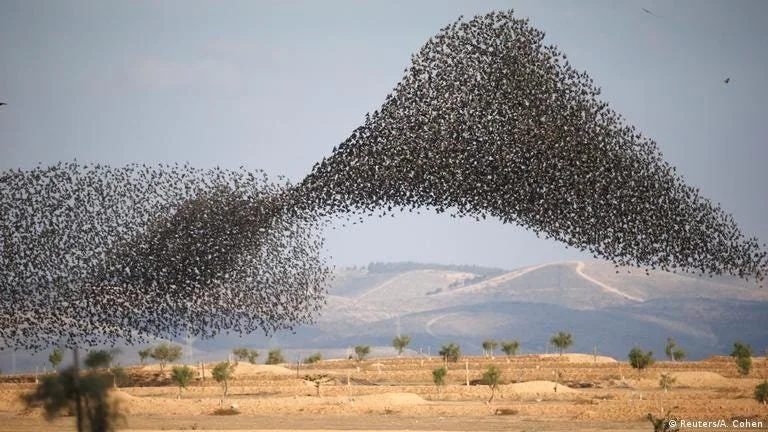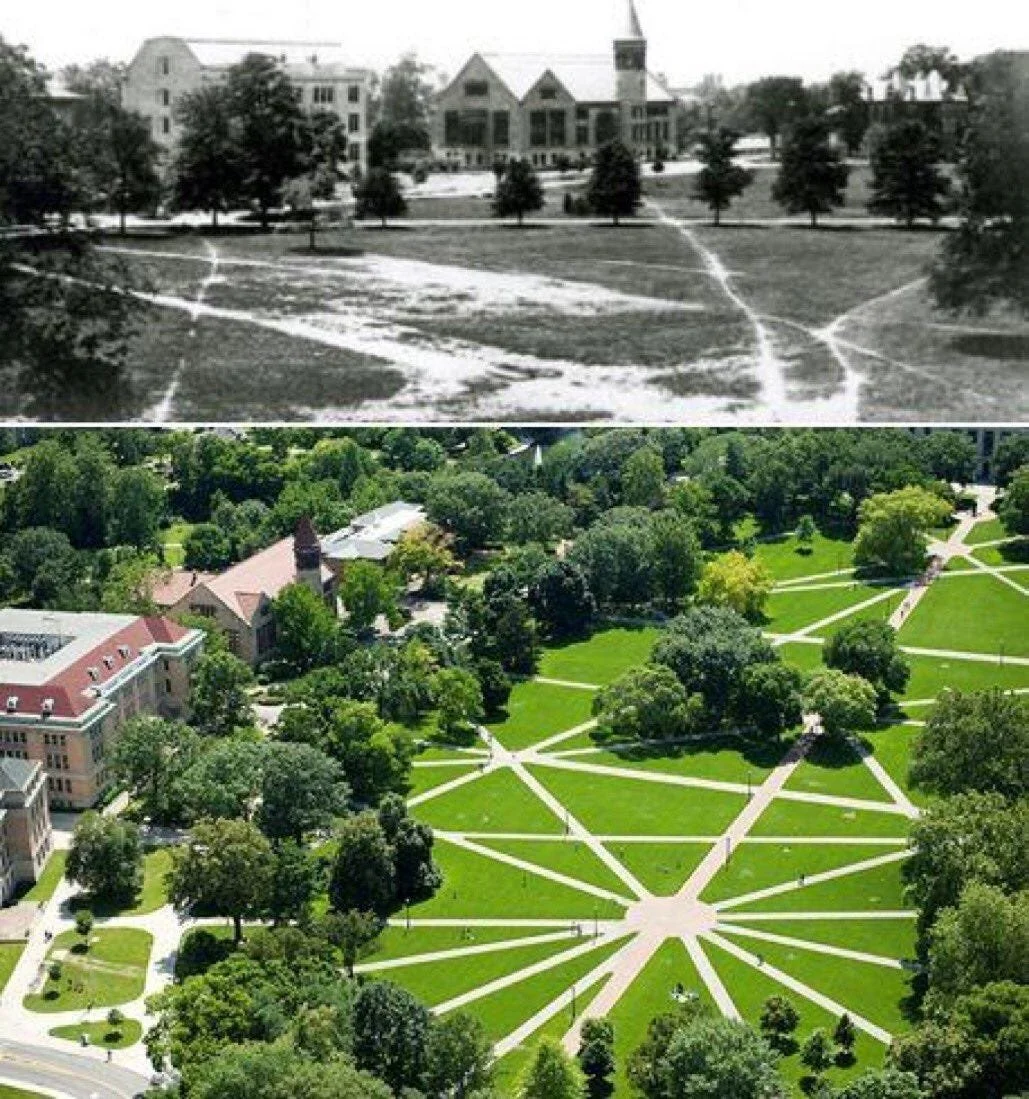Complexity Theory has Fundamentally Changed my Approach to Design
Most of us like to believe the world is a big machine: parts slot together, causes lead to effects, and if something breaks, you just pop the hood and fix the right gear. But as problems become more complex or multi-faceted, the ability to organize and solve becomes immeasurably hard. That’s where complexity theory asks us to step back and realize—it’s not really a machine at all. It’s more like a rainforest. Every plant, animal, and microbe is connected in ways you can’t fully see, and the smallest nudge—a shift in rainfall, a wandering predator—can ripple through the whole system in ways that surprise you.
At its heart, complexity theory is about recognizing that certain systems don’t behave in neat, linear ways. I can’t always predict the outcome by adding up the parts, because the parts interact, adapt, and evolve together. Think of a flock of starlings swooping across the sky. There’s no leader bird with a megaphone calling out “turn left!”—each bird is simply responding to the birds around it. But together, they produce these breathtaking, synchronized waves of motion. The whole is more than the sum of its wings.
Starlings pay attention to ~7 other birds around them — yet seem to organize and flock together.
We see this everywhere: in ecosystems, in traffic patterns, in financial markets, even in the way ideas spread through a community. Small changes can snowball into big shifts. Patterns emerge where no one designed them. And sometimes, the harder we try to control a complex system, the more it pushes back—like quicksand tightening the more we struggle to control it.
What makes complexity theory so refreshing is that it gives us a new lens to see the messiness of life not as failure, but as a natural feature of systems where many forces, variables, and agents are colliding. Instead of trying to force neat order, it invites design with emergence, feedback loops, and adaptation in mind.
I first stumbled onto complexity theory listening to Neil Theise — a scientist from NYU on the Armchair Expert podcast. He was trying to explain this wild idea—that the world isn’t a machine with parts you can simply tinker with, but a living, breathing web of interconnections. The way he put it, even the tiniest nudge in the system could set off ripples we’d never predict.
As I listened, I connected it back to my own approach to experience and system design. I thought about the countless hours I’ve spent trying to map schema and user journeys for organizations —some of the most complicated service design challenges imaginable. I’d stay up late sketching paths, researching variations, trying to account for every possible outcome a customer might encounter. And when new information came in, I’d go back, erase, redraw. Then do it again. It was like chasing smoke with a net—every time I thought I had it, the shape shifted.
And hearing this scientist describe complexity, I realized: maybe the problem wasn’t my diagrams, revisions, or sleepless nights. Perhaps I wasn’t searching for some new-and-improved visualization. Maybe the flaw was in my whole approach. I’d been treating these journeys like machines I could engineer into predictability. But if they’re more like ecosystems—full of feedback, adaptation, and emergence—then perhaps the way forward isn’t to control every variable, but to design in a way that allows the unexpected to breathe.
That’s not to say the craft of journey mapping or service blueprinting suddenly goes out the window. Those practices are still essential—they’re the scaffolding that helps me see the milestones, the waypoints, the turnstiles people must pass through on their way to some larger goal. Without them, I’d be wandering blind in the forest. Now, I wonder if a good map doesn’t predict every twist of the trail, but flags the inflection points: where something instrumental or detrimental happens; where someone advances closer to a goal, where someone gets stuck, where someone might turn back.
What complexity theory shifts, at least for me, is how tightly I grip the blueprint. Instead of trying to chart every possible branch and outcome, I can hold the map lightly—knowing the real journey will always be messier, more adaptive, more alive than any diagram can capture. The work becomes less about forcing certainty and more about building resilient, efficient paths—ones that can flex when the unexpected happens and still guide people toward where they need to go.
One of the biggest mindset shifts for me was moving from control to cultivation. For years, I thought of design as an exercise in controlling experience—minimizing risk, removing friction, anticipating every edge case. Complexity theory reframes that: I can’t prune every branch on the tree and expect it to flourish. What I can do is cultivate conditions where the right experiences are more likely to grow. Think gardener, not engineer. I tend the soil, water consistently, and trust that growth will follow—even if it doesn’t look exactly as I imagined. It forces me to focus on the relationship a person has with an experience at the most local level. Example: it doesn’t matter how beautiful the branding is if the product and customer service are broken.
Another mental model I’ve adopted is thinking in terms of feedback loops instead of one-way flows. Traditional journey maps often feel linear: awareness leads to interest leads to conversion. But in reality, people loop back, skip steps, stall, accelerate. Designing with feedback in mind means asking: where can someone signal what they need? Where can the system adjust in real time? It’s like a thermostat constantly listening and recalibrating. The journey isn’t a straight line—it’s a living conversation.
Then there’s resilience over perfection. Complexity teaches me that no design can anticipate every twist. What matters more is how gracefully a system recovers when things don’t go as planned. In service design, that might mean building in safety nets: a customer support touchpoint that feels human and generous, a clear exit ramp back to the main flow, or even just transparent communication that turns confusion into trust. A resilient design doesn’t prevent every stumble; it makes sure stumbles don’t become disasters.
A related idea is to see edges as opportunities. In complex systems, the most interesting things often happen at the boundaries—where two patterns meet, where systems overlap. In design, that might be the handoff between digital and physical, or between self-service and human help. Instead of treating edges as awkward seams, I’ve started to see them as fertile ground for surprise and delight. The transition itself can be designed as an experience, not just a gap to be patched.
Another powerful frame is emergence, not enforcement. Some of the best experiences aren’t dictated top-down—they emerge from how people actually use a product or service. Think of hashtags on social media: a user-created behavior that became central to the platforms themselves. Embracing emergence means paying attention to these organic patterns and designing around them, amplifying what works instead of forcing what was planned. It’s a posture of curiosity, of noticing.
And finally, I’ve come to think in terms of wayfinding over way-making. The old me wanted to carve a single road and insist everyone follow it. The new me, informed by complexity, is more interested in leaving signposts, landmarks, and helpful signals. Wayfinding means I can’t control where people will go, but I can ensure they never feel lost. It’s the difference between a rigid itinerary and a well-marked trail system—I may not know which path a walker will choose, but I can make sure every path eventually leads somewhere meaningful.


